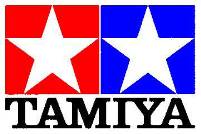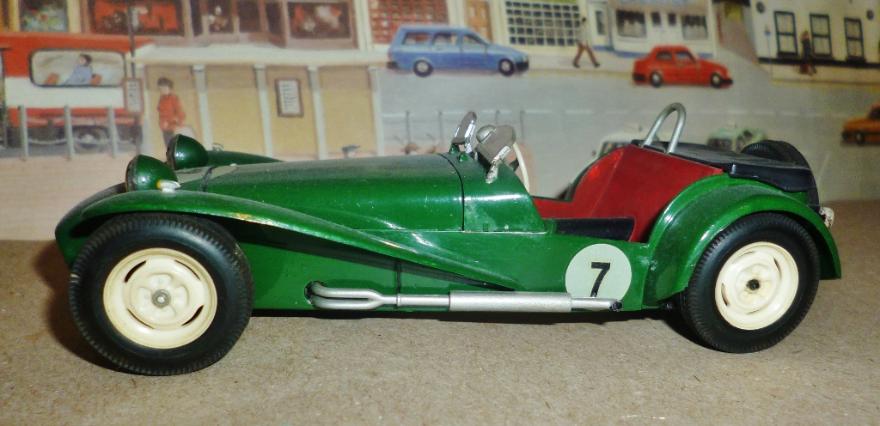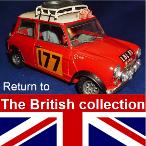1960 Lotus Super Seven Series II
The 1957 Lotus Seven made its first appearance at the Earls Court Motor Show in October of that year. Although looking like an evolution of the Lotus 6 it came into being a long time after the “6”, actually after the Lotus 11. The Numeral “7” had been used for a design meant for F2 racing in the early 1950s but which actually ended up a sports car named for it's owners as the Clairmonte Special.
So, to differentiate the designs the Seven was written instead of given its numeral form. This made the Seven unique in Lotus history and over the years and allowed the "Seven" to become a brand in it’s own right. The Seven was to build on the success of the VI, by avoiding purchase tax, by complying with what was known as "completely knocked down" or CKD product laws. Colin Chapman saw a loop hole in the law and exploited it, so a kit car could make a small sports car, for road or competition, very affordable.
As for the actual design, it was originally based around a high sided, rigid, space frame chassis and stressed skin construction. As the highest part of the car is about 3ft above the ground (and anything above the bonnet line being made of cloth, aluminium or plastic), and the lowest part of the sprung weight (the sump) being less than 5 inches from the road, a very low centre of gravity is created. Couple this to almost equal front to rear weight distribution and you have a very well handling little sports car. The worm-and-nut steering was soon swapped out for a rack-and-pinion system which was surprisingly light so the lack of any "power" system was not a problem. Accelerating from 0-60 in around 5 sec's it was often referred to as a 'four wheeled motorbike' and it's top speed of 100mph with the wind in you hair certainly made the performance feel very sporty and very much like a motorcycle. Suspension was by live axle and leaf springs at the rear but at the front an A arm lower wishbone was fairly normal but the anti-roll bar acting as a top arm to locate the hub, as well as reduce roll, was innovative. The brakes remained cast iron drums but were surprisingly good at stopping the car due the overall light weight of the car. The philosophy of a lightweight, high power sports car with great performance worked for Lotus with 2,500 cars being sold.
It was replaced in 1960 by the Lotus Seven series II which were of a less rigid nature being more for road sales rather than race production. It had aluminium bodywork , a g.r.p. nose but the cycle wing front mudguards were replaced by longer fiberglass wings fitted directly to body and which gave the car a classic look which is what usually comes to mind when ever some body thinks of the Lotus Seven.
The 1961 Lotus “Super” Seven Series 2 model was powered by a 1340cc Ford engine modified by Cosworth who later were able to give the model 1498cc or 1599cc engines making the Super Seven a very rapid and exciting vehicle to drive.
Lotus was moving on by the 1970s and was looking to distance itself from the kit car image of it's roots. The rights to the “Seven” model were sold on to Caterham Cars who were the only agents still selling the cars for Lotus and the Caterham Seven became familiar on the British roads although almost always referred to as a “lotus”! Caterham developed the car extensively and latterly have added different car models to their range. Of course there were other dealers around the world who bought the rights to produce the “Seven” in their countries, some of which have kept going for some time.
Many other companies have mimicked the look of the “Seven”, most notably Westfield cars who ended up in a legal battle with Caterham. Westfield settled the issue out of court and redesigned their car and produced it from different materials to Caterham meaning the Westfield is a different machine built on a similar design philosophy.









One of the first tips Ian got after joining the IPMS branch in Stafford was to use a thin paint brush rather than the one in the cap as it was more accurate and carried less liquid resulting less spillage on the surrounding plastic surfaces. The places were the liquid glue marked the plastic can now be seen under the paint, this is just one of the strange ways finishes can be affected over time.
RETURN TO :-
